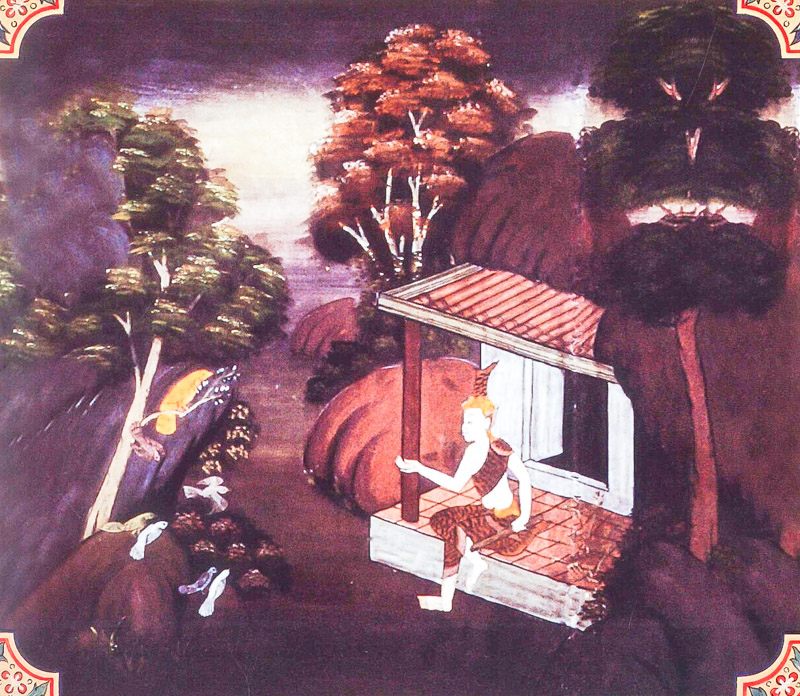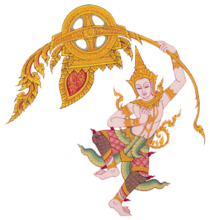
The Bodhisatta was once a pigeon. He and the flock he led fed around an ascetic’s forest hut, and visited him from time to time to hear his wise words. After the ascetic had lived there for fifty years, the villagers served him a meal of pigeon, and he thought it tasted so good he decided to kill and eat some pigeons from the Bodhisatta’s flock.
The ascetic gathered the ingredients he would need for cooking (rice, ghee, milk, cumin, and pepper) and sat at the entrance to his hut with a staff hidden under his robe, waiting for the pigeons. When the Bodhisatta arrived, he noticed something about the ascetic was not right. Then he smelled the aroma of his recent pigeon meal and knew what the ascetic planned to do. The Bodhisatta told his flock to fly away.
The ascetic tried to sweet-talk the Bodhisatta into returning, asking why after decades of showing respect, he now treated him this way. The Bodhisatta answered that he had only now learned he was a false ascetic. Knowing that his plan had been uncovered, the ascetic threw his staff at the Bodhisatta, but missed. The Bodhisatta told him, “You have missed me with your staff, but you will not miss the torments of hell.” The Bodhisatta threatened to expose his true nature to the villagers if he remained, so the ascetic went away.
In the Lifetime of the Buddha
The false ascetic was an earlier birth of Devadatta, a disciple of the Buddha who became his nemesis and tried to kill him three times. When the Buddha heard some of his disciples discussing Devadatta’s evil ways, he told them this story so they knew that Devadatta had also tried unsuccessfully to kill him in the past.
The good ascetic who lived there before the false ascetic arrived was an earlier birth of Sariputta, one of the Buddha’s top disciples.
